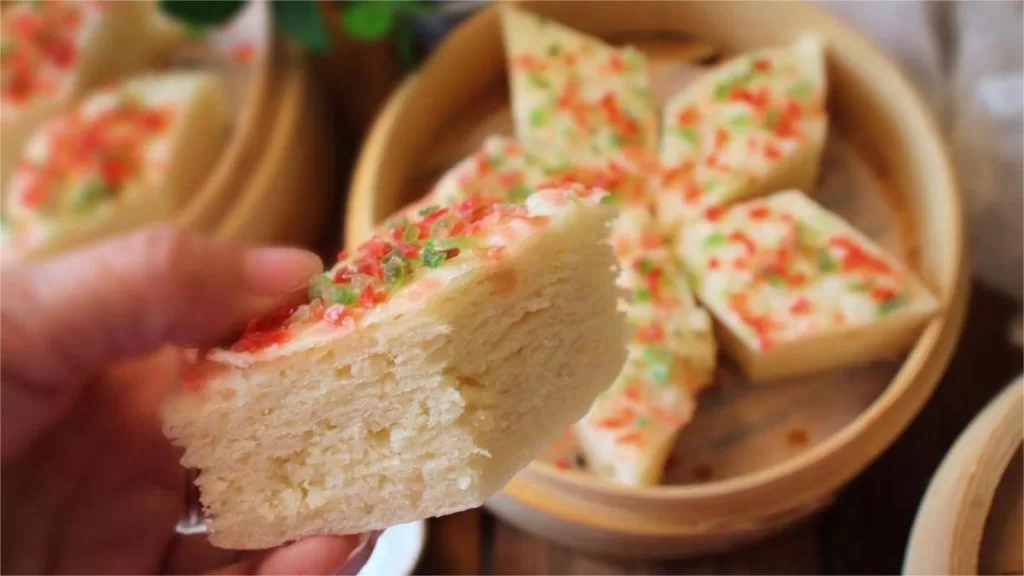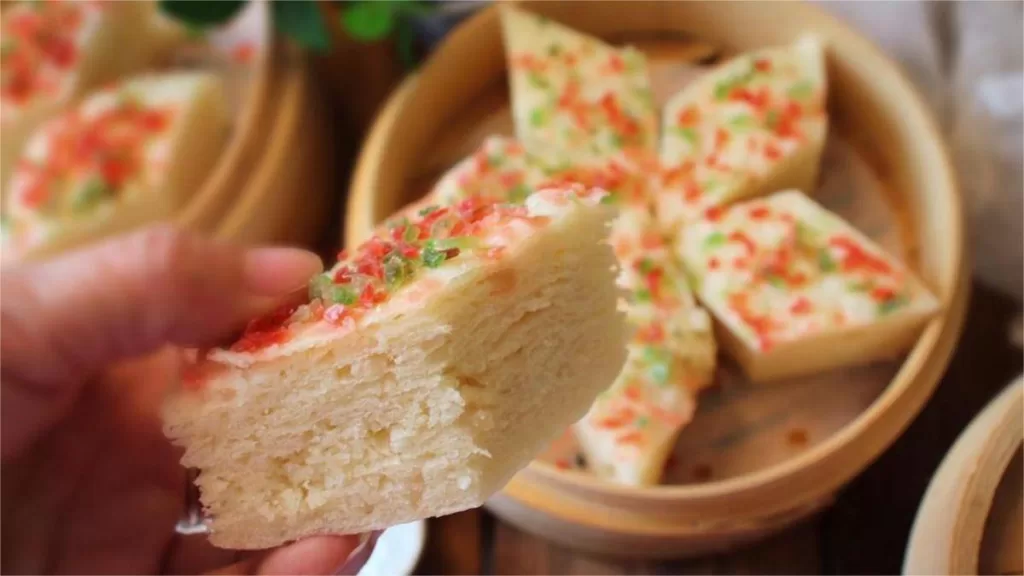Bolo de óleo de mil camadas - um petisco tradicional em Yangzhou


The “Thousand-Layer Oil Cake,” known as “千层油糕” in Chinese, is a famous traditional snack from Yangzhou, a city in Jiangsu Province, China. This delicacy is renowned for its unique preparation method, resulting in a soft, sweet, and multi-layered cake with clear and distinct layers. It is often presented in diamond-shaped pieces, boasting a delicate amber hue and a semi-translucent appearance. The cake is composed of 64 individual layers, each consisting of alternating layers of sugar and oil. The top of the cake is adorned with red and green threads, giving it a visually appealing and fresh appearance, while the texture is exceptionally soft and tender, with a delightful sweetness.
The history of the Thousand-Layer Oil Cake dates back to the late Qing Dynasty, during the reign of Emperor Guangxu. It was originally created by a Fujian native named Gao Naichao and has been enjoyed for nearly a century. Over time, Yangzhou’s skilled chefs refined the technique, drawing inspiration from the traditional artistry of “Thousand-Layer Steamed Bread,” which is characterized by its snowy-white appearance and the ability to peel it into thousands of layers. This innovative process led to the creation of the soft and sweet Thousand-Layer Oil Cake, making it one of Yangzhou’s cherished traditional treats. It is often paired with another local favorite, the “Jade-Colored Siu Mai,” and together, they are affectionately referred to as the “Twin Delicacies of Yangzhou.”
In 1983, a renowned Yangzhou pastry chef named Dong Dean presented the Thousand-Layer Oil Cake in the National Culinary Competition, where his exceptional culinary skills left judges and audiences astounded. He was awarded the title of “China’s Best Pastry Chef,” cementing the cake’s reputation as a culinary masterpiece in Chinese cuisine.
The Thousand-Layer Oil Cake not only captivates the palate with its delightful sweetness but also showcases the dedication to traditional culinary craftsmanship, making it a culinary gem that represents the rich heritage of Yangzhou’s culinary traditions. It has gained recognition not only for its taste but also for the artistry and skill involved in its creation, becoming a symbol of the city’s gastronomic excellence. Visitors to Yangzhou can savor this delectable treat, appreciating the centuries-old tradition and the masterful techniques that go into crafting each layer of this unique delicacy.